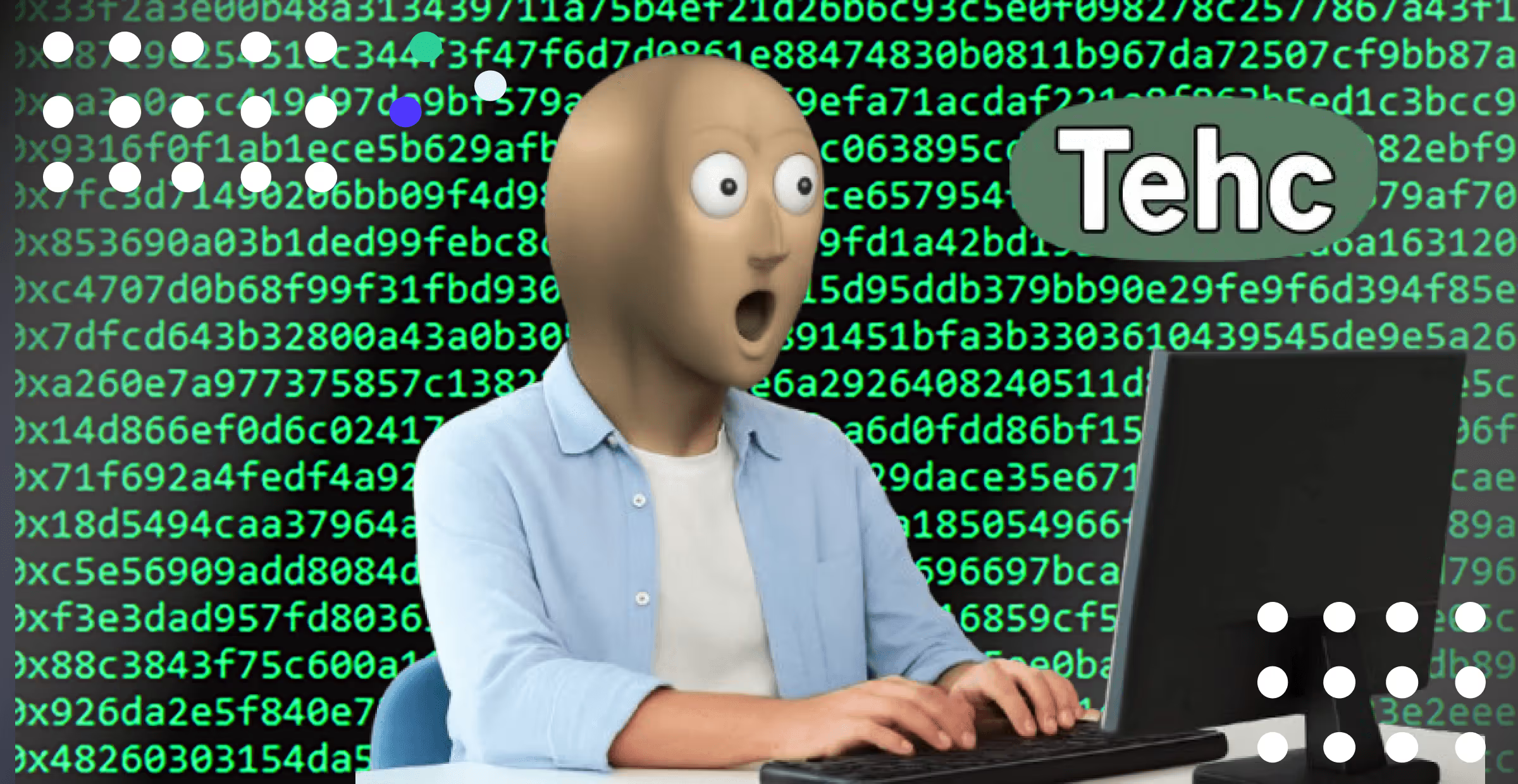The Future of Web3 Is Being Prompted, Not Coded



When people visit the Tatum blog, they’re usually here for the deep dives, technical guides, performance benchmarks, RPC gateway updates. And that makes total sense. Tatum is a developer platform, built by and for engineers.
But this post is a little different.
Because I’m not a developer.
I’m not deploying contracts to mainnet, but I work alongside the people who do, every day.
From my not-so-technical seat inside a very technical company, and after years of watching Web3’s cycles of hype and innovation ripple through communities, I can feel it: something big is shifting again.
So here’s my take, less about code, and more about what it feels like to witness the next wave hitting Web3.
And why, this time, it will actually be good for all of us.
I tried running a few lines of code in the past. Nothing worked. It threw some kind of errors, something about a missing bracket.. Probably missed something obvious, but still, that moment was enough for me to admit: yeah, maybe this coding thing just isn’t for me.
After all, we’ve got plenty of brilliant engineers at Tatum already taking care of that. (Btw we’re hiring some more talents)
Honestly to me, coding looked exciting, but also overwhelming. It felt like a world of syntax rules, multi-colored lines, and constant debugging. Not exactly designed for people like me, who prefer to express ideas in plain language rather than semicolons and stack traces.
But over time, something changed. A lot, actually.
Now, I can open my browser, ask my new best friend:
“Build me a bot that tracks a wallet and alerts me if something weird happens.”
Et voilà, in seconds, it gives me code that works. Or at least almost does.
Copy. Paste. Tweak. That’s what my old friend Mike is doing. (Mike actually exists)
Mike’s a full-time teacher. He spends his days in a classroom of 40+ 6 Years old, but in those rare quiet hours, he likes to build stuff. Not in the “I contribute to GitHub every night” kind of way. More like: he opens up Gemeni, describes what he wants, gets code back, and tweaks it until it works.
He doesn't know much about blockchain. He’s never even used a non custodial wallet. But he has built a Telegram bot monitoring buys, and a wallet tracker, just for fun. All with prompts.
Watching Mike experiment taught me that this isn’t just for devs leveling up their workflow. It’s for everyone who has ideas and wants to give it a go.
Let’s be honest: that’s not just a cool trick. It’s a shift in how we build.
They call it vibe coding, and it’s exactly what it sounds like.
You don’t write code. You describe your intent.
The AI scaffolds the logic, generates test cases, and hands you working code.
You tweak and ship.
And this isn’t just some trendy movement, according to the 2024 Stack Overflow Developer Survey:
Quick one for you, when’s the last time you didn’t use an AI to help you code?
Looking back a few years, I rode the DeFi summer 2020 wave, then came NFTs the following year, the metaverse and its endless plots of digital land, a brief gaming boom, and of course, the Solana memecoins that followed. And in late 2024, the new train rarrived: AI agents.
Names like AI16z, Virtual Protocol, and a dozen open-source agent projects seemed to appear overnight. You blink for the winter holidays, and by January, you’re already late.
But here’s the thing, it wasn’t just FOMO.
For me, it’s always been more than that. I’ve always been drawn to what’s new, not just to chase trends, but because I love the vibe, and the energy, the creativity. I’m a social animal. I like being where people are experimenting, testing the edges.
From a purely investment point of view, spending ETH on a JPEG of a blue panda in a golden plane wearing a wizard hat didn’t make that much sense… It was fun, but didn’t feel like a revolution.
But AI does.
Not just community hype, but real technological momentum. It’s the first time since the DeFi Summer that I get this feeling, when people weren’t just speculating, they genuinely wanted to build.
In just one year (2023 to 2024), the number of open-source agent frameworks doubled.
At Tatum, we even predicted that 1 million AI agents would be live by 2025 (Top 10 Predictions for 2025)
But for those agents to function on-chain, they need more than prompts.
They need fast, multi-chain, reliable infrastructure.
They need something like… Tatum.

Yes, “AI + Blockchain” does sound like a buzzword mashup that marketers love. But the synergy is legit.
AI can write the code.
But blockchain is where that code executes, openly, immutably, and trustlessly.
AI thrives on data.
Blockchains offer plenty of it, verifiable, timestamped, and tamper-proof.
Blockchain apps need real-time automation.
AI agents are literally designed to automate, analyze, and react to changing conditions.
Here’s how it comes together:
It’s already here.

“First they ignore you, then they laugh at you, then they fight you, then you win.”
Not that long ago, blockchain was dismissed as a passing trend. Hedge funds mocked it. Banks warned against it.
Today? Those same institutions are publicly building or investing in it.
We’re no longer just talking about Telegram and Discord groups.
It’s nation-states, global banks, public companies, and regulators.
Even if some asset managers still don’t like this ecosystem, they’re realizing they have no choice but to jump on the train, or risk being left behind.
The mentality has shifted.
It’s funny, a few years ago, if your project didn’t have a blockchain angle, it wasn’t cool.
Now? If it doesn’t have AI, you're not getting attention.
These days, it feels like every product is “AI-powered.” Every pitch deck drops “LLM” within the first few slides. And honestly? That’s normal. Why wouldn’t you lean into a technology that’s being adopted everywhere,and that almost anyone can understand at a glance?
From a user point of view, if you can describe what you want, and the machine can actually build it for you, then the only thing standing in your way is infrastructure.
Because no matter how smart your AI is, you’ll always need:
That’s where we come in. 😉
Time to go on the record, because five years from now, we’ll probably come back to this article and either laugh... or say “called it.”
Here’s what I think might happen by 2030:
1️⃣ - Smart contract logic? 95%+ drafted by AI first.
2️⃣ - Most Web3 operations? Handled by agents, not humans.
3️⃣ - Every dev toolkit? Comes with an LLM baked in.
And yes, platforms like Tatum will quietly power much of this in the background. In fact, we’re already building something internally to bring agents and infra even closer together. More on that soon.
But let’s be clear: this doesn’t mean I will become a developer or that devs become obsolete. It means the kind of developer we need evolves.
There will always be a place for highly skilled engineers, those who understand what’s happening under the hood, who build the infra, and patch the edge cases AI can’t catch.
Tatum is built by them and for them.
But we’re also building it for the new wave: the prompt-first builders & the AI copilots.
Because in 2030, you might be a senior Solidity architect designing systems at scale, or someone like me, just good at describing what they want, we’ll both be building.
We might all be using the same tools and talking to the same AI, but the ones who truly understand what’s under the hood?
They’ll be more valuable than ever. My 2 cents.
Build blockchain apps faster with a unified framework for 60+ blockchain protocols.